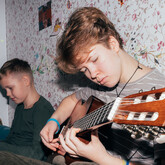“I love Alice Tegnér and Felix Körling, with his Nej, se det snöar (No, look at the snow), Tomtegubben som hade snuva (The goblin who had a cold) and Ett gammalt fult och elakt troll det var en gång (There was once an ugly and wicked old troll), and I had no thought of replacing them when I first started composing in the early 1950s. But for me, music has always been a teaching tool. I want to foster learning, movement, coordination, rhythm, relaxation and – not least – concentration. And I thought there was room for some more children’s songs,” says Gullan Bornemark, serving coffee with precise pianist’s fingers in the cosy living room of her home in the old part of Limhamn just outside Malmö.
The stories of the two great women of Swedish children’s song come together in Gullan Bornemark’s home town of Härnösand, where she heard Alice Tegnér’s last public concert as a child, an event which made a great impression on her.
But her future musical career was already decided when her father, the head of the Technical School, traveled to Stockholm to buy a piano for his obviously gifted two-year-old, and had it shipped by boat up to Härnösand. The piano tuner came on the ferry from Turku and stopped off to tune pianos along the whole of the Norrland coast while he was there.
“If you are born with so much music inside you, of course it will find its way out. I never dreamed of being a doctor or a nurse or any of the other things that children fantasize about. My ‘inner Gullan’ told me early on that my life would revolve around music,” she says.
Surrounded by music
Next to her is the Steinweg piano that the headmaster bought – still as good as new. The piano shares the room with the Steinway grand on which she does her daily exercises. She and her lifetime companion Valter Bornemark (they recently celebrated their 65th wedding anniversary) regularly play double piano on the sister instruments.
The living room breathes music. In the bookshelves, nothing but biographies of musicians from all eras, scores and fat vinyl box sets from the classical catalog: operas, Bach, Beethoven.
And Sohlman’s Dictionary of Music, of course.
On the walls and tables, all sorts of instruments: a French horn, bassoon, bouzouki, nyckelharpa, violin and viola, and an old and dilapidated cister – a cross between a lute and a guitar which Valter Bornemark, 89, is planning to restore. A cello and a music stand in the southern corner. Valter can play most of them.
Gullan Bornemark’s life still revolves very actively around music. When she is not preparing for a forthcoming concert evening, she is recording an album of favorites from her own back-catalog in her son Dan Bornemark’s studio in Höganäs.
“My granddaughters, Hjördis, 12, and Signe, 10, are doing the singing. My own voice has dropped a third with age, so I have to step back,” she says.
The recording is financed by a grant from the Swedish Arts Council, which sees it as a ‘culturally important recording’, an endorsement of her position as a key figure in Swedish children’s culture.
She herself is as surprised as she is happy.
“I think it is fantastic that the Arts Council should choose to spend money on an old lady like me, and I’m really pleased to have the chance to issue some previously unpublished children’s songs,” she says.
Director of Music at 22
At 18, Gullan Bornemark began her studies at the Royal College of Music in Stockholm, partly under the composer Oskar Lindberg, whom she greatly admired. Four years later, her business card read ‘Director of Music’. In 1951, after just one year as a music teacher at the girls’ school in Malmö, she left to start the Blåklockan music school, which she was to run for 56 years – until her knees told her to stop.
“Once again it was my ‘inner Gullan’ that told me what to do. Of course it caused a sensation for a young girl to give up an established job to start her own school in a discipline, musical play, which did not even exist. But I was firm in my conviction. I wanted to work with children and use music as a means of teaching. I thought it should be fun to learn new things, and I was sure I was on the right track – and when I read more about Maria Montessori’s research, which found that children learn through play, I had my confirmation,” she says.
Word of the Blåklockan school spread first to Malmö’s musical families. And after an article in the newspaper Sydsvenskan, all her weekdays filled up. As Gullan Bornemark had new ideas, the classical children’s songs were no longer enough.
“Jack-in-the-box was the first children’s song I ever wrote, and I saw immediately that children wanted to act, improvise and play to this type of song,” she says.
So she wrote more. And more.
In the early 1960s, she performed some songs on Sveriges Radio with two Blåklockan children.
And then things took off.
The children’s slot on the radio grew into children’s TV programs such as Tutirutan, Den Glada Butiken and Anita och Televinken. Almkvist & Wiksell published her first songbook, which went straight into a second edition.
Gunhild Bornemark became Gullan for all the children in Sweden.
“Radio and TV had a huge impact at that time, and I suddenly started to receive letters from people I never knew before. It was an amazing experience, which reached a peak at the end of the 1960s,” she says.
Sudda sudda
She points to the gold disc hanging on the wall above the stereo system in the living room. In 1968 the children’s classic Sudda sudda (Wipe away that sulky face) became a surprise hit, which she herself puts down to the ‘catchy’ tango rhythm.
“Yes, it worked. But, together with Är du vaken, Lars? (Are you awake, Lars?), it was also the song that taught me that irony does not work in children’s songs. A lot of people accused me of being a know-it-all home educator, when the message was actually that we should not nag children,” she explains.
So how do you compose good music for children? Well, if your name is Gullan Bornemark, the dramatic element is important.
“Something might happen at the end of the song, for example, so you can build up the children’s expectations as you play and sing. I soak up what children talk about like a sponge, as those are clearly the things that engage them. This approach is behind songs like Min ponny and Det är så härligt att gå i solen (It’s so fine to go out in the sun), which were inspired by my own son Sven when he was little,” she says.
Family tiffs and current events also create a strong sense of identification, as shown by Sudda sudda and Är du vaken, Lars?
“And one of my children’s songs which I like the best, Månstegen (Moon steps), I wrote in 1969 after Neil Armstrong’s first steps on the Moon. It appealed to a sense of wonder in the children.
Coordination and motor skills
A Gullan Bornemark song can also develop children’s coordination and motor skills, and teach them to judge distance and movement, which is why she often devises some accompanying choreography which can teach children to show consideration and preserve their integrity.
“Like all musicians, I am totally convinced of the power of music to bring out the best qualities in us. I think that is self-evident. I also believe music has the power to bring comfort, and I want my songs to do that too.”
Just like Povel Ramel, Robban Broberg or Frank Zappa, she enjoys playing with words and paradoxes.
“That’s the end of the food – we must fix (cook) it, or Your stocking is running – we must stop (darn) it don’t puzzle children. On the contrary. They think double-meanings are fun, and this develops their language and their ability to think in abstractions.
For Gullan Bornemark, composing is a sensitive business. It demands your full attention, she says, as Valter Bornemark remarks in passing, on his way from the hall to the kitchen, that she cannot even stand him coughing when she is making music.
“No, I don’t like to be disturbed when I am writing,” she admits with a laugh. “I try to include many of the elements I have mentioned in the words and the music. Then there are thousands of ways of arranging the melody and fitting the words to it. I am never satisfied until the puzzle fits together perfectly. The desire and the delight in creating music cannot be held back. So why should we try?”
Gunhild Bornemark
Age: 88
Lives: Limhamn
Career: Qualified as a music teacher at the Royal College of Music in Stockholm, 1950, and as a church musician at the Malmö Academy of Music, 1977. 1952–2007, Blåklockan music school. First songbook, Gubben i Lådan, published in 1962. Radio and TV career starting in the 1960s.
Favorites:
Bach and Beethoven. “Right now, it’s Bach’s St Matthew Passion and Beethoven’s Eroica symphony in E-flat major. Fabulous. And soon I will be able to meet them both and ask them how they thought.”
Spare time: “Music and more music. Sudoku and crosswords together with Valter. And I have Selma Lagerlöf’s Nils Holgersson’s wonderful journey on my bedside table.”
About no. 799 in the hymn book:
“I have translated Norwegian and German religious songs for children. After the fire in the discotheque in Hisingsbacka in 1998, I wrote an ecumenical hymn in honor of all the children and young people who died. It is called Att mista en vän (To lose a friend).
Miscellaneous: Has perfect pitch. “It is a gift to hear all the notes in a symphony and experience the music in depth.”
Gullan at STIM:
Works registered with STIM: 376
First recorded work:
Barnkalas
Most radio plays:
Mango tango
Kiwi
Sudda sudda
Valpen min
Ananas jazz


